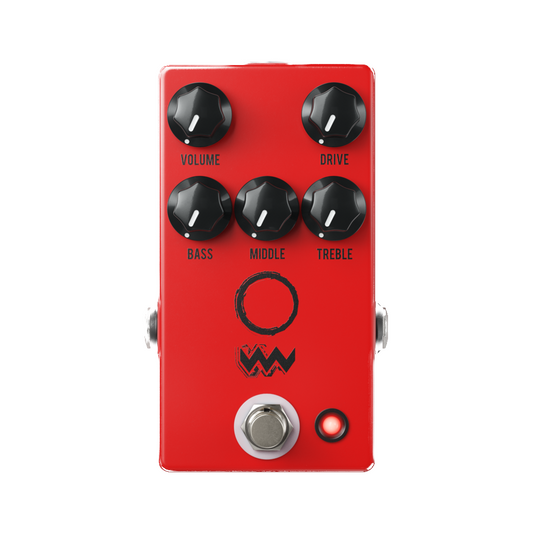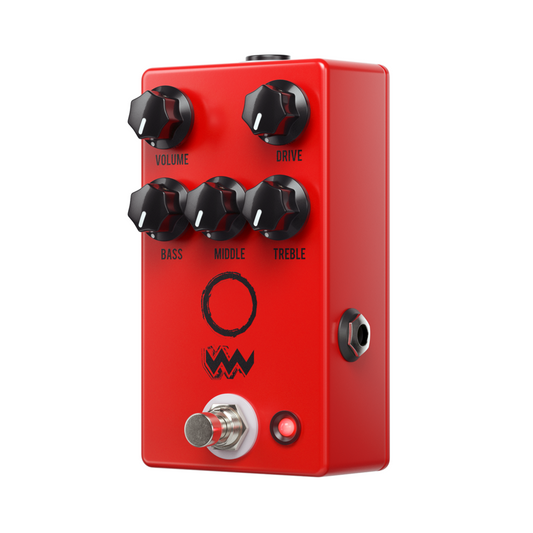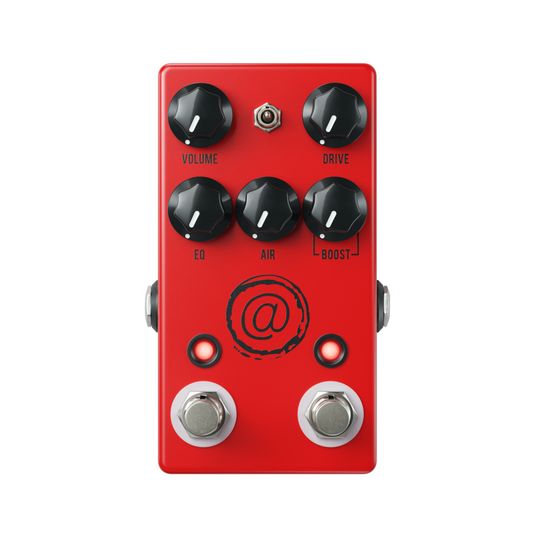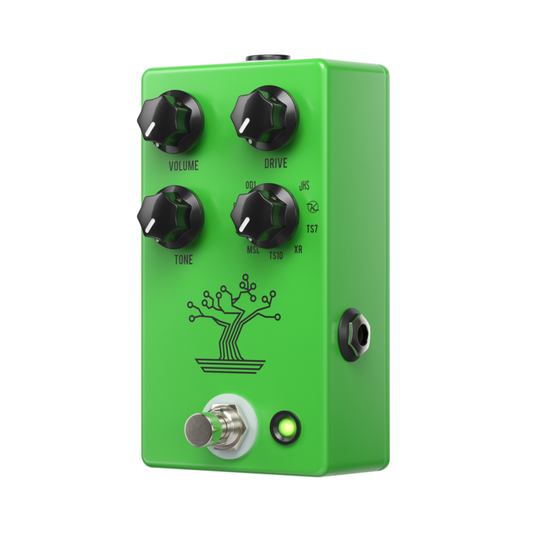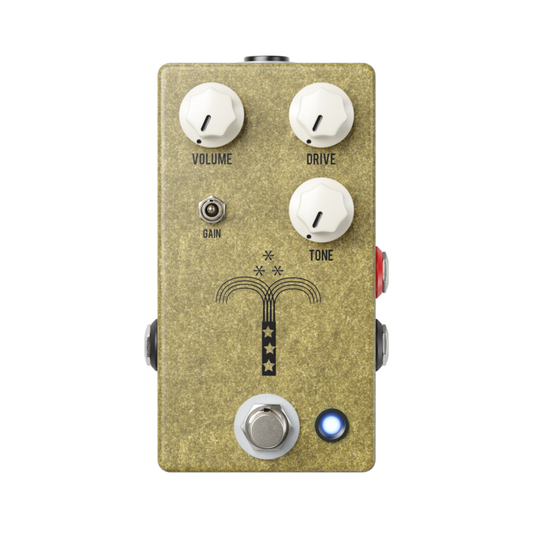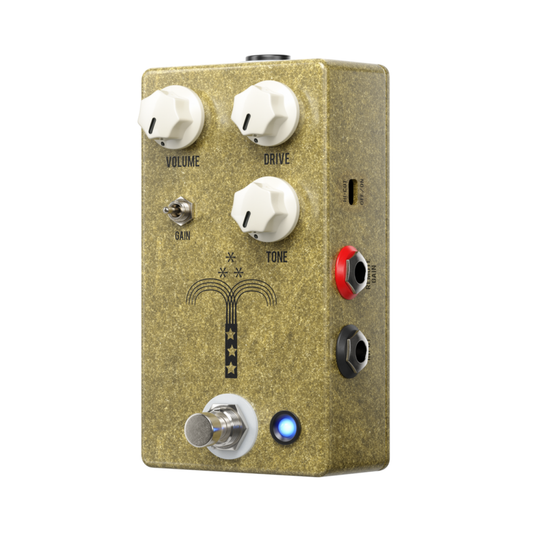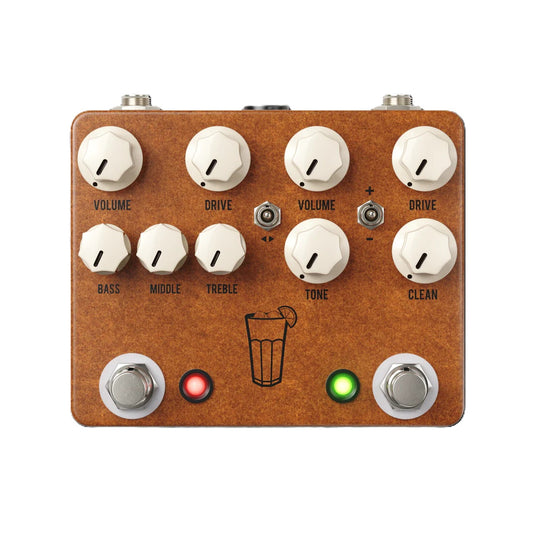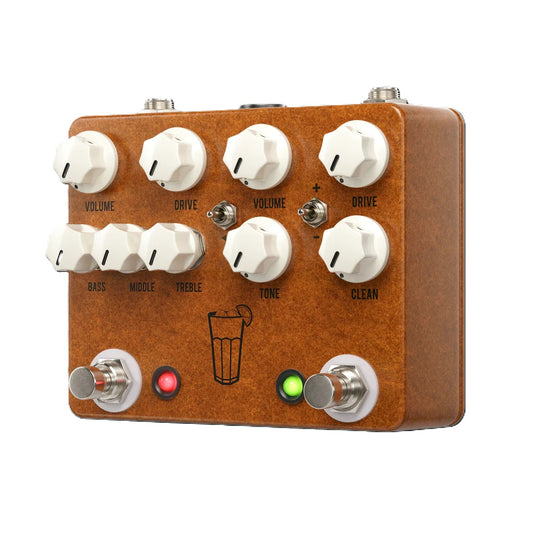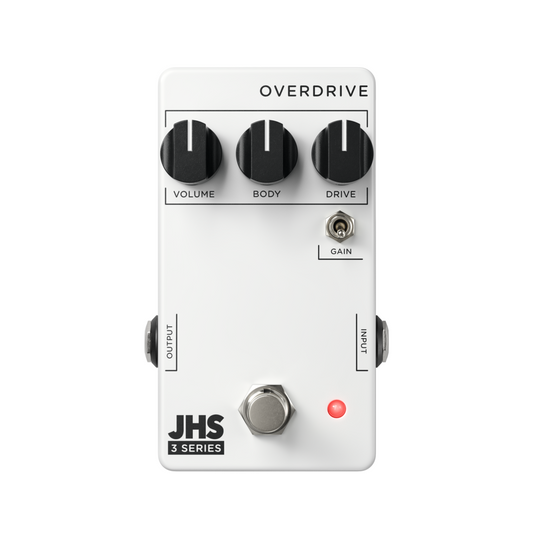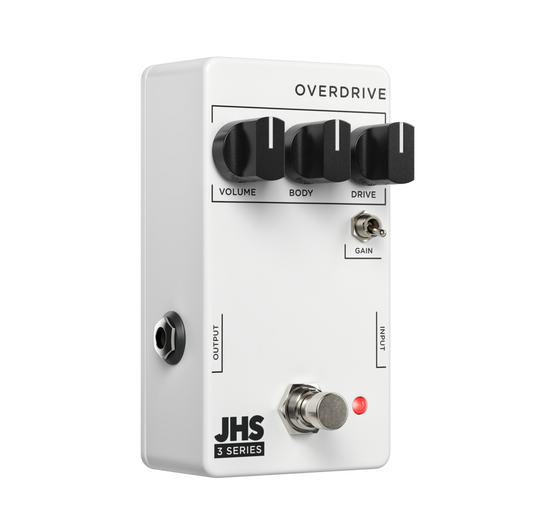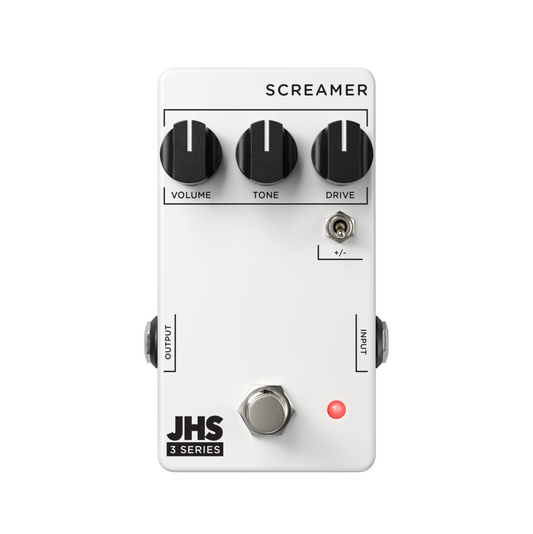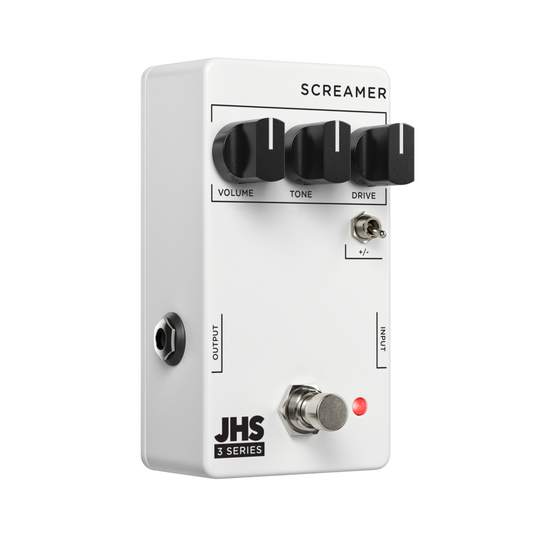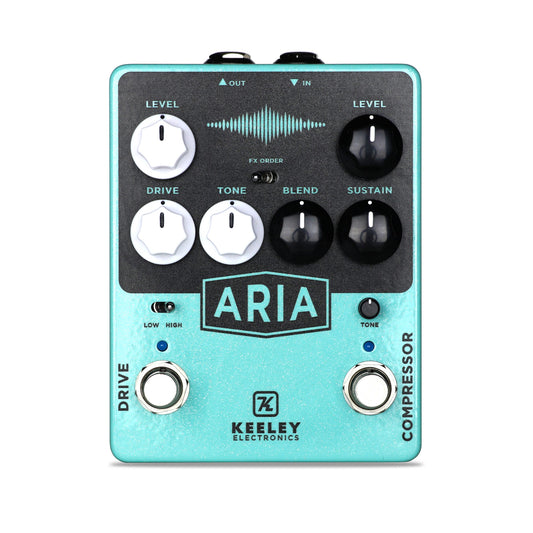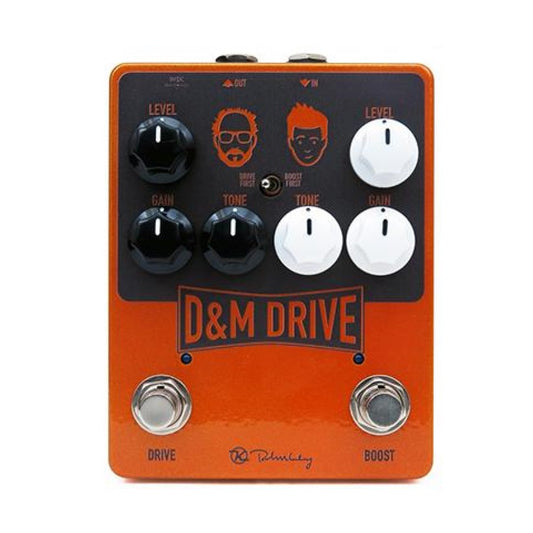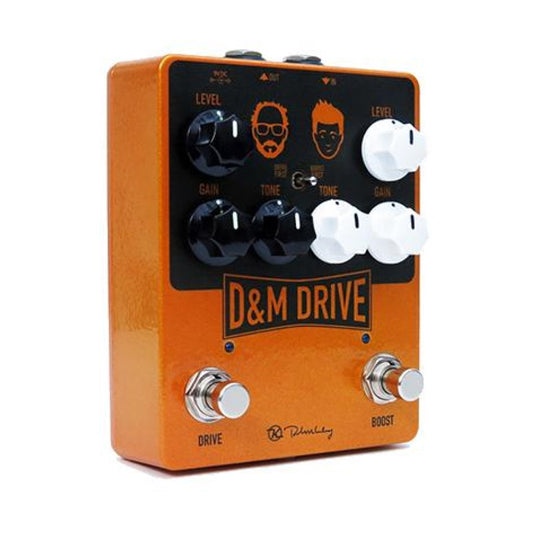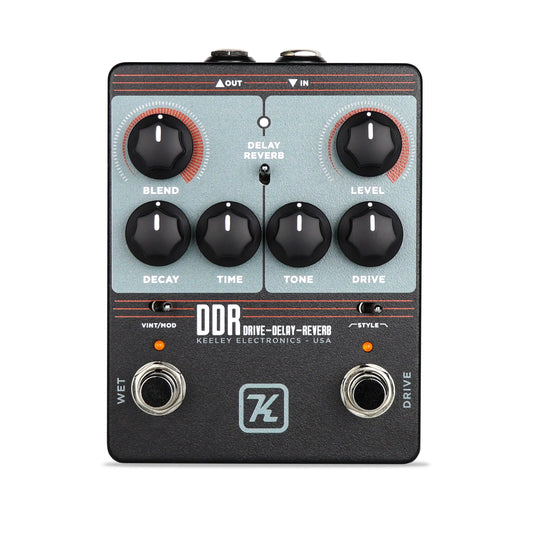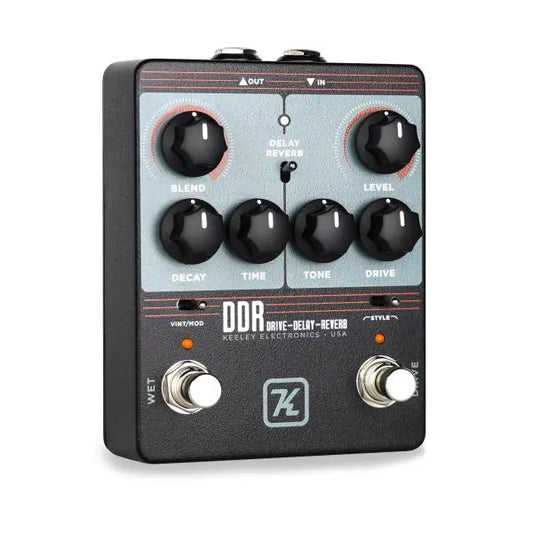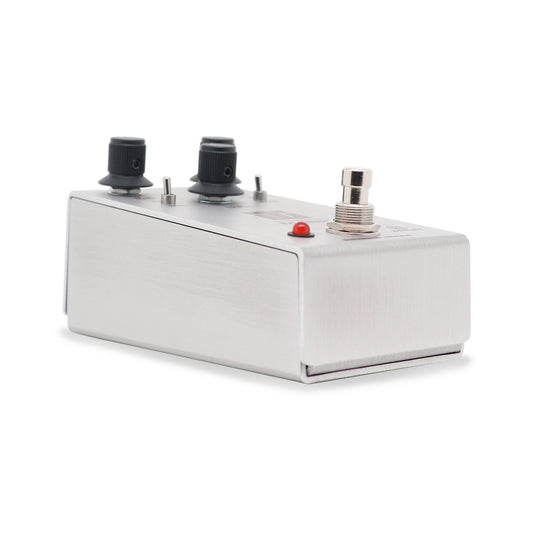Guitar overdrive pedals are the perfect addition to every signal chain and a staple for pedalboards. There are various types of overdrive pedals that are perfect for boosting solos, rhythm playing, tonal enhancement and stacking with other gain pedals. Choose from multiple styles: vintage, transparent, mid-range and high-gain.
Finding the perfect guitar overdrive pedal might seem like a chore, but it doesn't have to be. These guitar pedals provide a wide range of options to enhance your guitar's natural tone and amplify its sound.
In fact, when you pick the perfect pedal, it tends to be a rewarding process. Why? The overdrive pedal simulates the natural, warm sounds of a slightly pushed tube amplifier. It adds just that extra special touch of saturation and harmonic richness to your guitar tone, which creates a sound that's so smooth and responsive that it can sound truly amazing.
We'll tell you about many unique uses, types and benefits of guitar overdrive pedals in greater detail below.
What Does a Guitar Overdrive Pedal Do?
A guitar overdrive pedal is specifically designed to deliver guitar effects that simulate natural and warm sounds of overdriven amplifiers. More specifically, it adds to the guitar tone by creating more drive and saturation to the guitar signal. This makes the guitar sound responsive, smooth while adding sustain and a bit of compression.
It shouldn't surprise anyone that overdrive pedals are popular. Their ability to add texture and sustain to the guitar without completely altering the tone is a special and unique benefit.
This pedal boosts your guitar signal gain while retaining the tonal characteristics and dynamics of your playing. When playing heavy and hard, it produces intense saturation and grit. When playing softly, it delivers a subtler overdrive and sustain.
The key characteristics and parameters of overdrive pedals include:
- Touch Sensitivity
- Tone Enhancement
- Sustain & Compression
- Gain/Drive Controls
- Level/Volume Controls
- Tone/EQ Controls
Where Does an Overdrive Pedal Go in the Chain?
When adding an overdrive pedal to a signal chain, guitarists has a few placement options. They include:
- Before Distortion or Other Gain Pedals – This option delivers a smooth and versatile setup. The overdrive boost pushes the distortion pedal harder, creating a more saturated, thicker sound.
- Before Modulation and Time-Based Effects – This is common and produces interesting results. The delayed and modulated signals carry the overdrive sound characteristics, which add depth and complexity to the tone.
- After Dynamics Effects – This pedal placement creates an even more controlled response. The overdrive and compressed signals interact together more smoothly, providing consistent saturation no matter the playing dynamics.
How to Choose a Guitar Overdrive Pedal
Things to consider include:
- Your Playing Style – Different overdrive pedals cater to different musical styles
- The Amount of Gain You Need – Are you looking for a subtle boost, high gain or mild crunch?
- Versatility and Stack-ability – Is it a versatile overdrive pedal that works well when stacked with other gain pedals?
Consider these thoughts and questions and use the answers to choose the perfect overdrive pedal to meet your needs.

